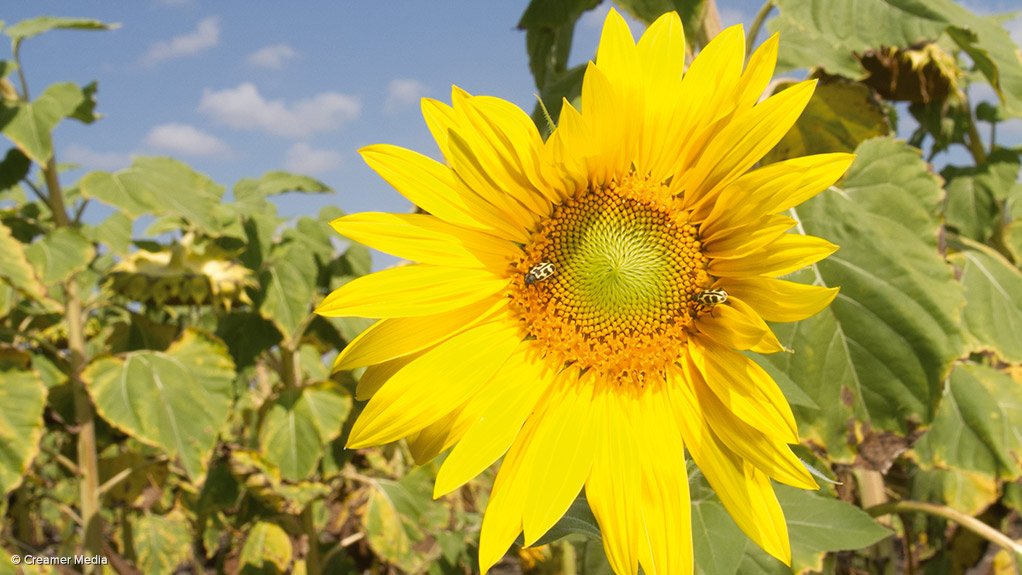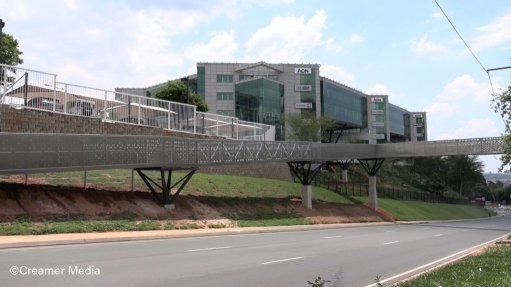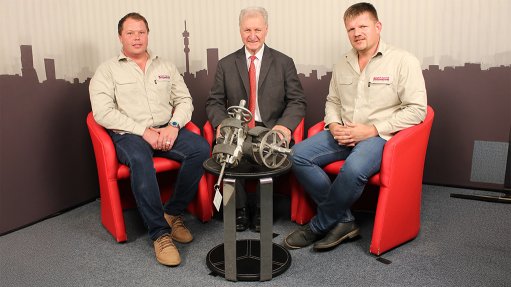South Africa’s agriculture sector geared to respond to global risks


A panel of speakers discuss the need to invest in technologies and infrastructure to boost agricultural exports
Photo by Creamer Media
South Africa’s agriculture sector is no novice when it comes to global risk mitigation and adapting export procedures according to market standards, Agricultural Business Chamber of South Africa chief economist Wandile Sihlobo has said.
During a panel discussion hosted by Creamer Media on May 28, he pointed out how the agriculture sector managed to double in volume produced and value generated since 1994 – a period which had a myriad of global shocks and trade disruption.
Despite various localised and international challenges having been posed to South African farmers and agroprocessing businesses, the industry has grown to export half of what it produces every year in value terms.
Citing the US market, in particular, Sihlobo said the US accounted for between 4% and 6% of South Africa’s agriculture exports every year, which was now under threat owing to President Donald Trump’s radical trade policies and tariffs.
He described these actions as ironic since Trump would punish the very same farmers that he expressed concern about during a meeting between himself and President Cyril Ramaphosa earlier in March, if a proposed 30% import tariff is imposed on South African goods.
Sihlobo attributed South Africa’s remarkable agriculture growth, including its export of a record $13.7-billion worth of goods in 2024, to investment in productivity growth both from the public and private sectors.
He lauded the strides made on the mechanical side, with companies such as John Deere continuously investing in farming equipment innovation, as well as on the biological side, with agrochemicals that have helped to grow the value chain immensely.
Sihlobo noted that South Africa had been very open to researching and adopting new seed varieties, for example, which had increased grape yields, as an example, from 2 t/ha to 6 t/ha since 2000.
Bureau for Agriculture/Agricultural and Food Policy senior analyst and director Mmatlou Kalaba, meanwhile, pointed out that, despite persistent infrastructure constraints such as rail and cold storage on the continent, South Africa had managed to grow from exporting 10% of its produce to African countries to more than 40%.
Of course, this has largely been in the Southern African Development Community region and there remains scope for further growth in the rest of the continent.
“Similar to Covid-19, the Ukraine war and multiple global financial crises having affected supply chains, the current trade turmoil in the world may bring one or two institutions down, but as a sector we will come out better and stronger,” he stated.
Citrus Growers’ Association (CGA) CEO Dr Boitshoko Ntshabele agreed with Sihlobo that there had been markable expansions of fruit plantations, growth in productivity, new irrigation technology development and new seed variety adoption in South Africa’s agriculture sector, all of which had enabled average yields to increase from 30 t/ha to 60 t/ha in the case of citrus.
The citrus industry, in particular, has grown to be one of the top four export industries in South Africa, compared with not featuring in the top ten export industries in the 1980s, said Bureau for Economic Research director and Stellenbosch University's Professor Johann Kirsten, who was also facilitator of the panel.
Ntshabele warned, however, that South Africa would become less competitive in the US if Trump was to impose a 30% tariff on imports from South Africa, which needed to be “mindfully and carefully navigated” if CGA’s goal, for one, to reach 260-million cartons of exports by 2030, was to be achieved.
Another pressing challenge that South African agriculture stakeholders had had to navigate over a number of years was the logistics inefficiency crisis. However, Transnet Port Terminals CEO Jabu Mdaki said all of Transnet’s divisions had focused on improving efficiencies and investing in new equipment, which boded well if South African exporters needed to serve new or more markets going forward.
Ntshabele mentioned that, in the 2025 season so far, Transnet had helped ensure that fruits were quickly loaded and dispatched, which was a solid improvement compared with some prior seasons, particularly 2024, where ports inefficiencies led to R5.2-billion direct and indirect costs for the citrus industry.
Still, Sihlobo pointed out, South Africa managed to achieve record exports last year, which could not have been done without Transnet’s port infrastructure operating effectively.
Commenting on increasingly stringent phytosanitary regulation globally, particularly if South Africa were to enter into new markets such as in East Asia, Ntshabele said the citrus industry was an example of an industry that was used to adapting to comply with international regulation and standards.
For example, it has cost local citrus producers R3.7-billion in costs to comply and manage waste to continue serving the European market – over increasing concerns over false coddling moth and black spot citrus diseases.
Ntshabele cited the example of citrus growers having previously had to spray orchards with pesticides no more than three times, but now having to spray about seven times a year to maintain European market share.
“The agriculture sector is able to claw back those costs through increased volumes and continued support for South Africa’s produce. While stakeholders are trying to preserve markets such as the US amid the current turmoil, it will not destroy our horticulture sector.
“If the tariffs are implemented, it becomes something that makes trade and compliance needing a different approach on the production and export level. It is about agility and adapting where possible,” he concluded.
Article Enquiry
Email Article
Save Article
Feedback
To advertise email advertising@creamermedia.co.za or click here
Comments
Press Office
Announcements
What's On
Subscribe to improve your user experience...
Option 1 (equivalent of R125 a month):
Receive a weekly copy of Creamer Media's Engineering News & Mining Weekly magazine
(print copy for those in South Africa and e-magazine for those outside of South Africa)
Receive daily email newsletters
Access to full search results
Access archive of magazine back copies
Access to Projects in Progress
Access to ONE Research Report of your choice in PDF format
Option 2 (equivalent of R375 a month):
All benefits from Option 1
PLUS
Access to Creamer Media's Research Channel Africa for ALL Research Reports, in PDF format, on various industrial and mining sectors
including Electricity; Water; Energy Transition; Hydrogen; Roads, Rail and Ports; Coal; Gold; Platinum; Battery Metals; etc.
Already a subscriber?
Forgotten your password?
Receive weekly copy of Creamer Media's Engineering News & Mining Weekly magazine (print copy for those in South Africa and e-magazine for those outside of South Africa)
➕
Recieve daily email newsletters
➕
Access to full search results
➕
Access archive of magazine back copies
➕
Access to Projects in Progress
➕
Access to ONE Research Report of your choice in PDF format
RESEARCH CHANNEL AFRICA
R4500 (equivalent of R375 a month)
SUBSCRIBEAll benefits from Option 1
➕
Access to Creamer Media's Research Channel Africa for ALL Research Reports on various industrial and mining sectors, in PDF format, including on:
Electricity
➕
Water
➕
Energy Transition
➕
Hydrogen
➕
Roads, Rail and Ports
➕
Coal
➕
Gold
➕
Platinum
➕
Battery Metals
➕
etc.
Receive all benefits from Option 1 or Option 2 delivered to numerous people at your company
➕
Multiple User names and Passwords for simultaneous log-ins
➕
Intranet integration access to all in your organisation




















